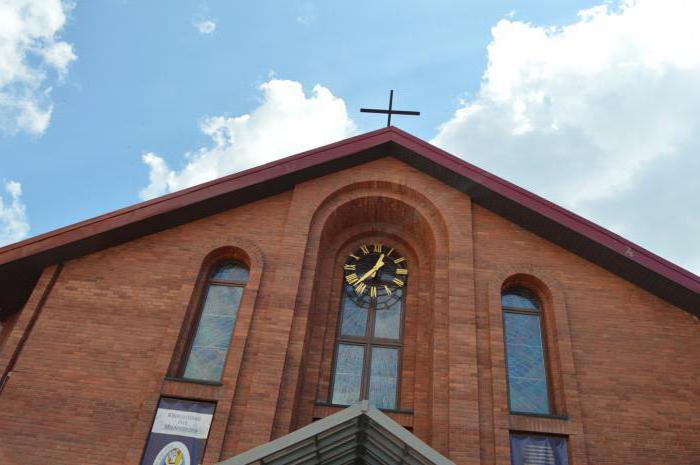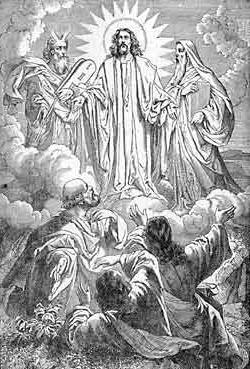Moscow Church of the Transfiguration of Our Lord in Tushino
Two villages - Tushino and Spasskoe - thatwere on the left, higher bank of the Shodni River, were known in the XIV century. In those days they were the property of the boyar Rodion Nesterovich Kvashni. The name of the village (Spassky) went from the monastery, which was located in those places until 1764.
History
The Transfiguration Monastery was donatedTrinity-Sergius Lavra, the descendants of Vasily Ivanovich Kvashnin, who had the nickname Tusha. The first monastery church was Preobrazhenskaya. At first the structure was built of wood, but then it was rebuilt in stone. By the middle of the XVII century, the design was completely dilapidated, and it was decided to disassemble it. The second stone monastic church was built in the 16th century, and it was dedicated to Andrei Stratilat.
In the Time of Troubles, near the Spassky Monastery andThe village of Tushino was encamped by the troops of False Dmitry II. They plundered and devastated all the surrounding villages. The monastery was also ruined. It was closed in 1764, and the Transfiguration Church turned into a parish church for the residents of the villages of Tushino and Spasskoe. A temporary wooden refectory was added to it, but in 1804-1808 it was dismantled. Instead of it, a new, more spacious stone building was erected. After some time, a multi-tiered high bell tower was attached to it. In the middle of the XIX century the refectory underwent some change, after which it was built an altar and placed a chapel in honor of St. Sergius of Radonezh.

Construction of a new church
In the XIX century, the church could no longer accommodate allwilling. The increase in the number of parishes prompted the idea of its reorganization or expansion. In addition, she was not in the best condition. The fact is that for three centuries the bank of the river, where the church stood, began to slide more and more, and as a result, the building was on the very edge of the cliff. It is for these reasons that in 1870 it was decided to build a new church of the Transfiguration of Our Lord in Tushino.
The project of the church was designed by the architectVladislav Osipovich Grudzinsky, who was then a member of the Chamber of State Property. A commission for construction was set up, headed by the local priest John Spassky. After the plan was approved in 1875 in the village of Spas-Tushino, the old building was gradually dismantled. We started from the bell tower and the refectory. Brick from the dismantled part of the old church went to the construction of the fence around the new construction.
Opening
The Transfiguration Church in Tushino was built witha warm refectory. By September 1880, it was already completely finished. Immediately here two consecutive chapels were consecrated: one - in honor of St. Nicholas the Wonderworker, and the second - Hegumen Sergius of Radonezh. Fairly significant amount in the form of donations to the new church was provided by the manufacturers K.E. Prokhorov and V. N. Suvirov, the official P. Tsurikov and the local priest John Spassky.
Unfortunately, the last of the philanthropists died in 1881year, and not live to see the completion of construction. Nikolai Buravtsev, the new abbot of the church, finished the good deed. In 1882, the entire site reserved for construction was fenced off with a metal fence with stone pillars, and a new cemetery was opened on the grounds from the north and east of the church. Finally, in 1886, on August 6, the church of the Transfiguration of Our Lord in Tushino was solemnly consecrated by Metropolitan Kolomensky and Moscow Ionniki.

Description
I must say that the building was built in that period,when the national Russian traditions of church architecture began to revive. The temple is distinguished by a thorough thoughtfulness of proportions and has simultaneously an exquisite and discreet decor. It is a single-headed and rather tall quadrilateral. From above, it solemnly ends with large beautiful kokoshniks and bulbous heads, and the heavily advanced three-part aspidum gives the temple a considerable amount.
Over each of the semi-circles is a kioticons. From the side of the refectory towers a three-tier bell tower. The brick walls of the temple are not plastered, so white and white stone details of the decor are clearly visible against their background. On the central altar of the church is a five-tiered iconostasis.
The Church of the Transfiguration in Tushino stood onthe watershed between the Skhodnya and the Moscow River. It was well seen a few versts along the Volokolamsk highway, as well as from the shores and nearby villages. It can be said that the church became some kind of architectural dominant of the area at that time.

The post-revolutionary period
From 1881 to 1935 the church on Volokolamke in Tushinowas led by a whole dynasty of the Rectors of the Buravtsevs. The last of their representatives - the priest Alexander - was shot by Communists in late December 1937. He was buried in the territory of the Butovo range in a common grave. In the summer of 2000, by the decision of the Bishops' Council, he was ranked as a saint.
As you know, the 30s of the last century were verydestructive for religious buildings. The Church of the Transfiguration of Our Lord in Tushino did not pass this trouble either. In 1935 it was closed. His last abbot was Alexander Sokolov, who was arrested and shot two years later somewhere in the Altai Territory. Until now, the place of his burial is unknown.

Desecration
After the war, variousSoviet organizations. In the mid-fifties, residents asked the local authorities to resume worship services. But the answer to these requests was the destruction of the bell tower and the main dome in 1957 - they were simply blown up.
In 8 years after the events described, it wasThe cemetery adjoining the temple was also abolished. All this territory was included in the industrial zone, which stretched along the entire railroad track. The repair and construction department, to which the church lands crossed, turned them into a real dump, and the building of the temple itself into a warehouse of building materials.

Revival
Transfiguration Church in Tushino returnedThe Orthodox Church was only in 1990. The Church and the main throne were consecrated by the Patriarch of Moscow and All Russia Alexy II. In the following years, the chapels dedicated to St. Sergius of Radonezh and St. Nicholas the Wonderworker were also consecrated. The rector of the church was appointed Fyodor Sokolov. Unfortunately, 10 years later he died tragically. He was buried right at the altar of a temple reborn from the ashes.
Once the church was opened, it began intensivelyrestore. The first thing that began was the restoration of its appearance: the head, kokoshniki, the upper tiers of the bell tower, which had been blown up, were renovated. AI Tsarev decorated tambourines kokoshnikov mosaic paintings, which depicts 12 apostles, and kioty with the composition "Deesis".

Completion of restoration
In addition, over each chapel was builtchapter, which gave the silhouette of the temple expressive. By the few remaining fragments of the openwork fence, it was possible to completely recreate the species that it had originally. Also, the main Holy Gates were restored.
It should be noted that during the construction work, ancient burials were discovered. Now all the remains of people are buried near the fence, on the south side of the structure.
The Transfiguration Church is not the only onea church located in the area. There are other shrines. For example, the ancient church of the Intercession in Tushino. Its construction dates back to 1672. It was also restored, and services are constantly held there.








